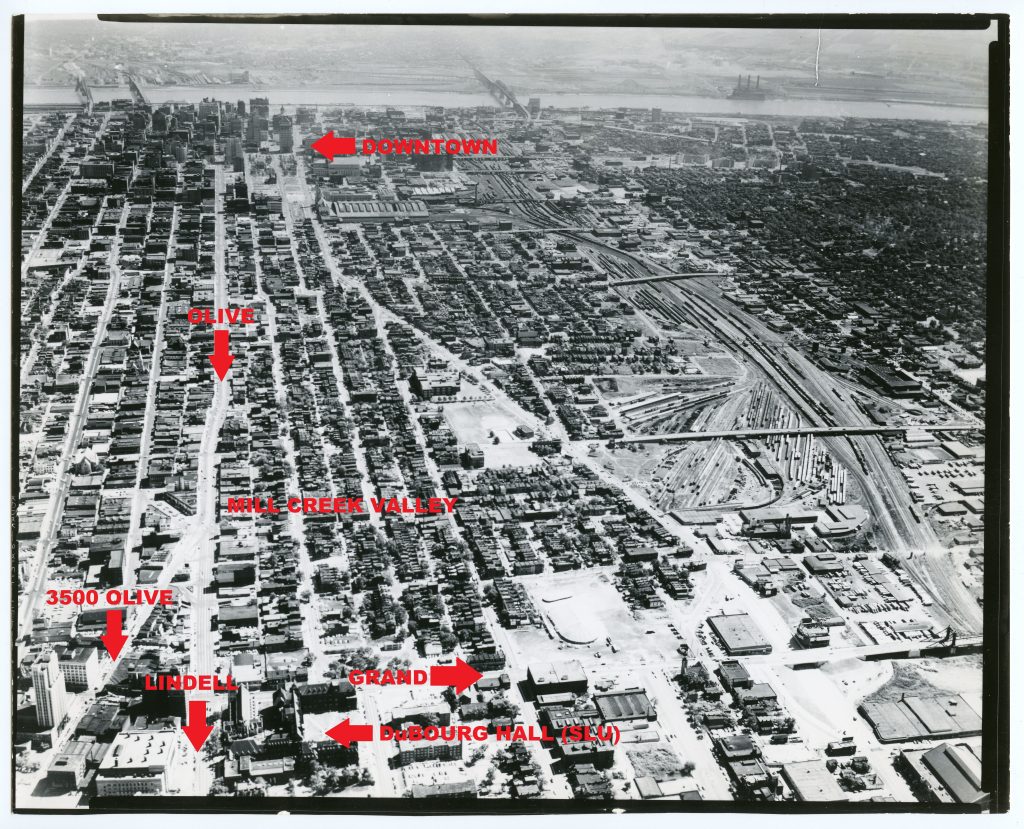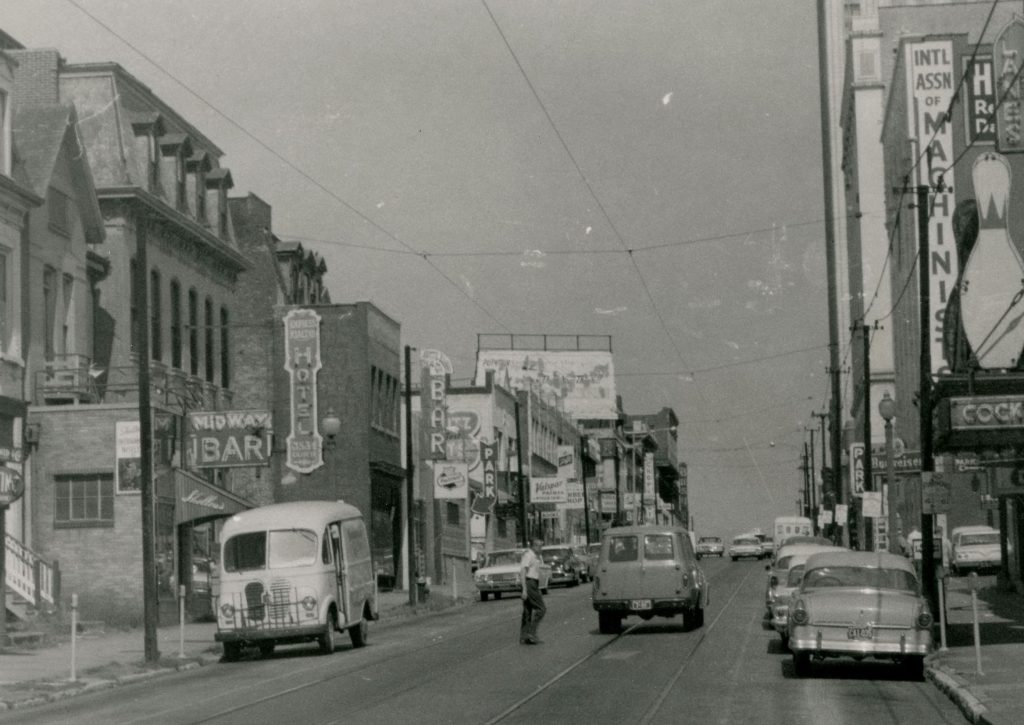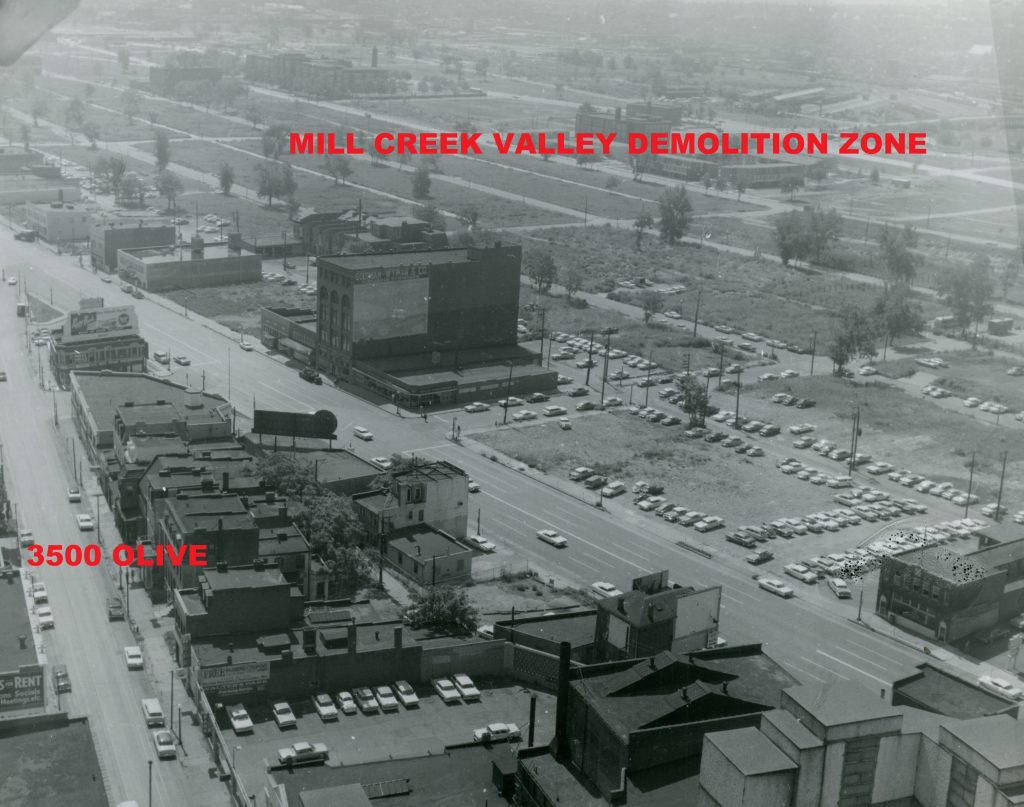
“In This Part of the City, All the Fellows Are Gay:” Exploring the History of LGBTQ Nightlife at St. Louis’s Grand and Olive [2/3]
Several factors probably played a part in the appearance of an LGBTQ nightlife venue near Grand and Olive in the 1930s.
The social makeup of the neighborhood had been changing. In earlier decades, the part of the city to the west of Grand—the West End—had been a relatively well-to-do residential district, populated in large part by families who aspired to respectability and lived in their own homes. Increasingly, however, single-family homes in the area had been converted into rooming houses, and apartment buildings had become more common. The population in the area surrounding Grand and Olive consisted more and more of transients, renters, and unmarried and childless adults. These sorts of people would have tended to have been less concerned about there being a gay bar in their neighborhood than married homeowners with children would have been. Some of the residents of these rooming houses and apartments were LGBTQ themselves and were among Dante’s Inferno’s employees and customers .

It is also important to note that the 3500 block of Olive stood near the northwestern corner of the Mill Creek Valley, a predominantly poor and working-class African-American neighborhood.
St. Louis’s elites regarded the Mill Creek Valley as a “slum,” and respectable white people generally avoided it. As complaints from the neighborhood’s residents carried little weight at City Hall, the police were more willing to tolerate prostitution and other illicit activities there than in other parts of the city.
Despite being located in a relatively hospitable area for a gay bar to operate, Dante’s Inferno did sometimes have trouble with the police. In 1943, for example, the bar was raided and its license temporarily suspended because the manager had been “permitting undesirable persons to congregate on the premises.” The Missouri General Assembly had recently passed legislation forbidding liquor license holders from serving customers who were “degenerates.” This language was used to justify the suppression of gay bars.

Dante’s Inferno remained in business until 1952, when brothers Fred and Jay Landesman bought the business and converted it into the Crystal Palace, a mostly straight but bohemian nightspot and performance venue. Several years later, the Crystal Palace moved seven blocks west down Olive to the then burgeoning Gaslight Square entertainment district.


[updated December 2017]
Author Ian Darnell is a PhD candidate at the University of Illinois at Chicago & graduate researcher for Mapping LGBTQ St. Louis
“In This Part of the City, All the Fellows Are Gay” is a three-part essay about the history of LGBTQ nightlife at St. Louis’s Grand and Olive. The title quote comes from a 1969 police report, when a man arrested for “masquerading” (i.e., dressing in drag) reportedly told a vice officer that “in this part of the city [i.e., the 3500 block of Olive and vicinity] all of the fellows are Gay.”
